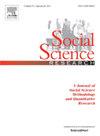双语浸入式课程及其社区:洛杉矶联合学区课程准入和代表性问题
IF 3.5
2区 社会学
Q1 SOCIOLOGY
引用次数: 0
摘要
学校种族隔离与居住种族隔离密切相关,是美国普遍存在的问题。双向双语沉浸式课程(TWDL)是一种专门的双语教育课程,通常作为学校选择课程,旨在为非英语国家和英语国家提供服务,它越来越被认为是一种有前途的机制,可以创造综合学习环境。在本文中,我们使用定量和地理空间方法来研究TWDL在克服居住隔离和创造多样化入学方面的潜力。我们使用独特的地理空间数据,包括学校出勤区和学生居住的人口普查区域,来分析洛杉矶联合学区(LAUSD)小学TWDL计划入学率与其社区组成之间的关系。我们发现,洛杉矶的TWDL项目往往位于人口比例较高的社区,这些社区特别能从双语教育中受益,包括与项目目标语言相关的种族群体、非英语人群和低收入人群。这些项目招收的大部分学生来自其出勤区域内的人口统计群体,但它们也作为学校选择项目招收来自传统上更有优势群体的区外学生,这有助于使入学人数更加多样化。我们的证据表明,LAUSD的TWDL项目起到了学校选择机制的作用,并且在一定程度上克服了居住隔离。本文章由计算机程序翻译,如有差异,请以英文原文为准。
Dual language immersion programs and their neighborhoods: Issues of program access and representation within Los Angeles Unified School District
School segregation, which is tightly linked to residential segregation, is a pervasive problem across the United States. Two-way dual language immersion programs (TWDL)—specialized bilingual education programs that often act as school choice programs and are meant to serve both non-English language and English speakers—are increasingly recognized as one promising mechanism by which to create integrated learning environments. In this paper, we use quantitative and geospatial methods to study the potential of TWDL to overcome residential segregation and create diverse enrollments. We use unique geospatial data, including school attendance zones and students' census tracts of residence, to analyze the relationship between elementary TWDL program enrollments in Los Angeles Unified School District (LAUSD) and the composition of their neighborhoods. We find TWDL programs in LAUSD tend to be located in neighborhoods with high proportions of populations who can especially benefit from bilingual education, including racial groups associated with programs’ target languages, non-English speaking populations, and low-income populations. Programs enroll high proportions of students from the demographic groups living within their attendance zones, but they also act as school choice programs that enroll out-of-zone students from more traditionally advantaged groups, helping to make enrollments slightly more diverse. Our evidence suggests TWDL programs in LAUSD are acting as school choice mechanisms and are, to a modest extent, overcoming residential segregation.
求助全文
通过发布文献求助,成功后即可免费获取论文全文。
去求助
来源期刊

Social Science Research
SOCIOLOGY-
CiteScore
4.30
自引率
4.00%
发文量
0
审稿时长
65 days
期刊介绍:
Social Science Research publishes papers devoted to quantitative social science research and methodology. The journal features articles that illustrate the use of quantitative methods in the empirical solution of substantive problems, and emphasizes those concerned with issues or methods that cut across traditional disciplinary lines. Special attention is given to methods that have been used by only one particular social science discipline, but that may have application to a broader range of areas.
 求助内容:
求助内容: 应助结果提醒方式:
应助结果提醒方式:


